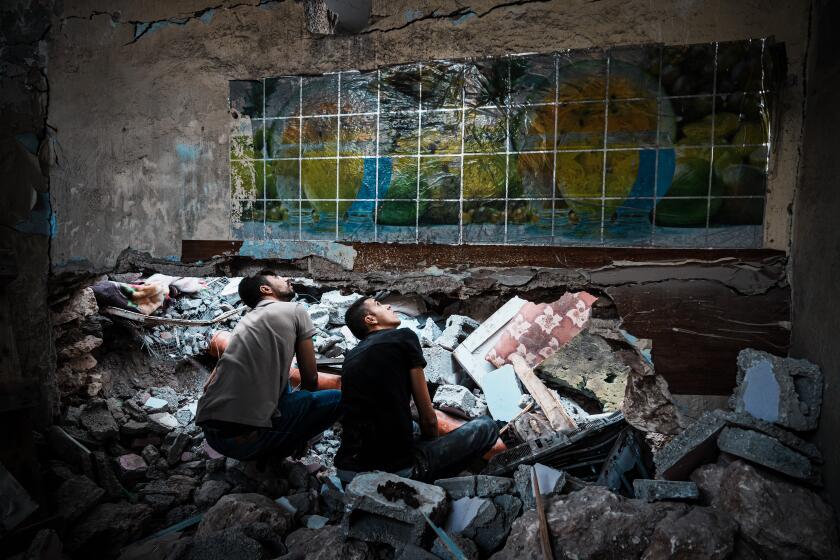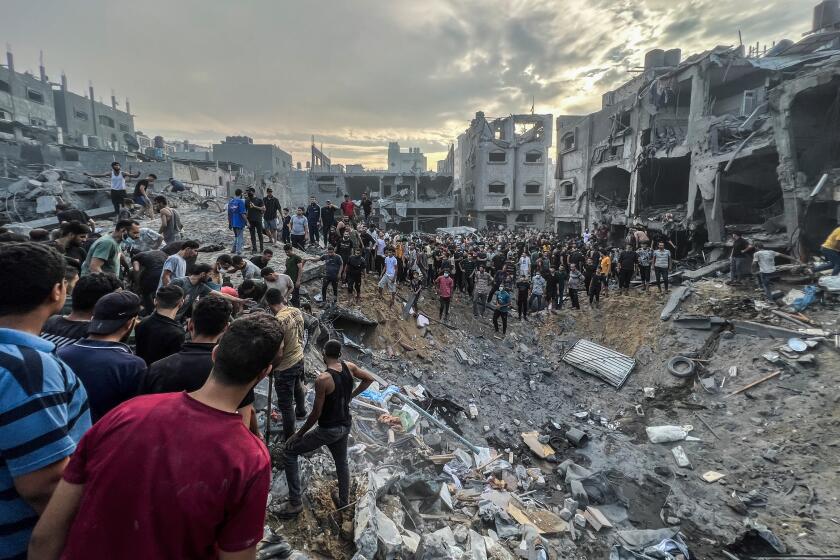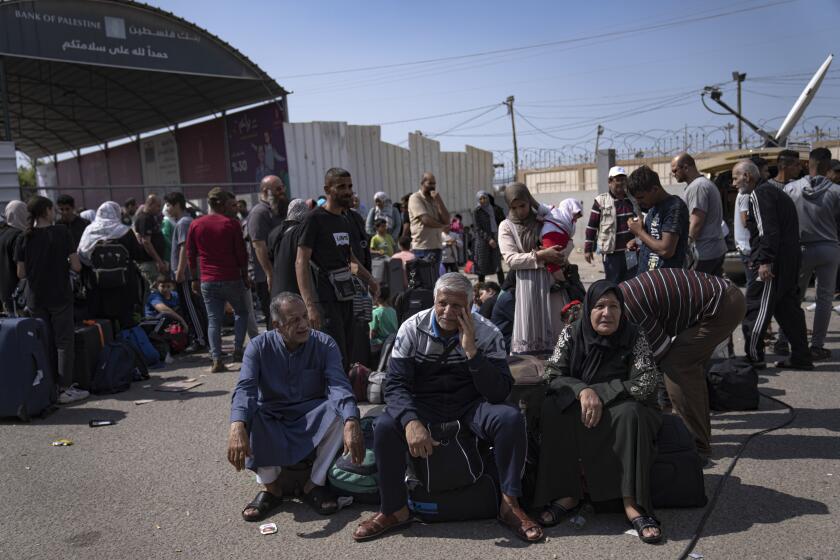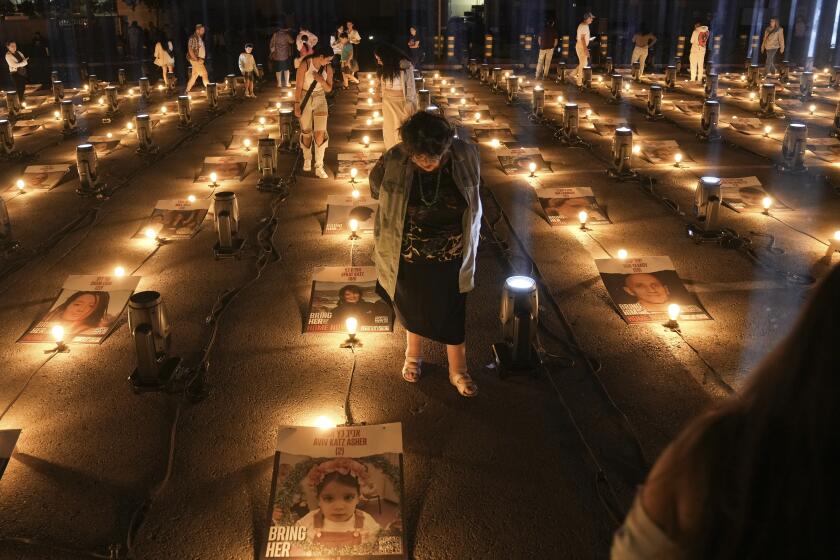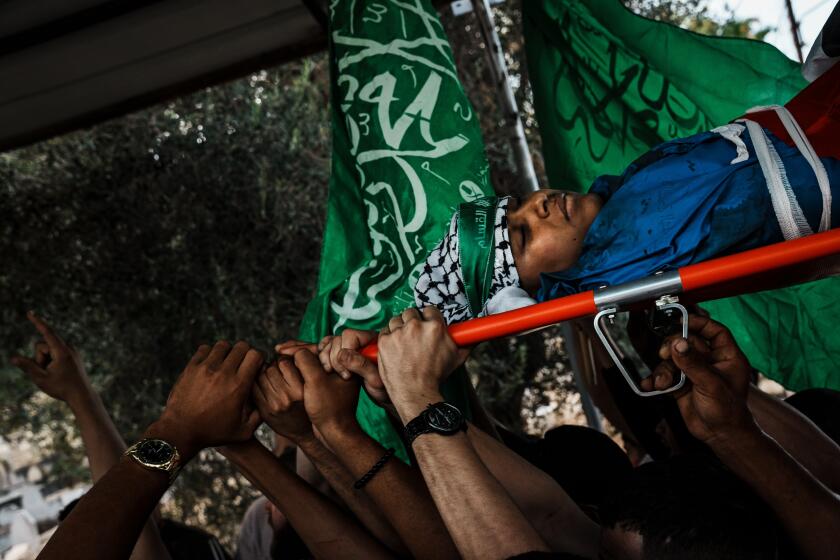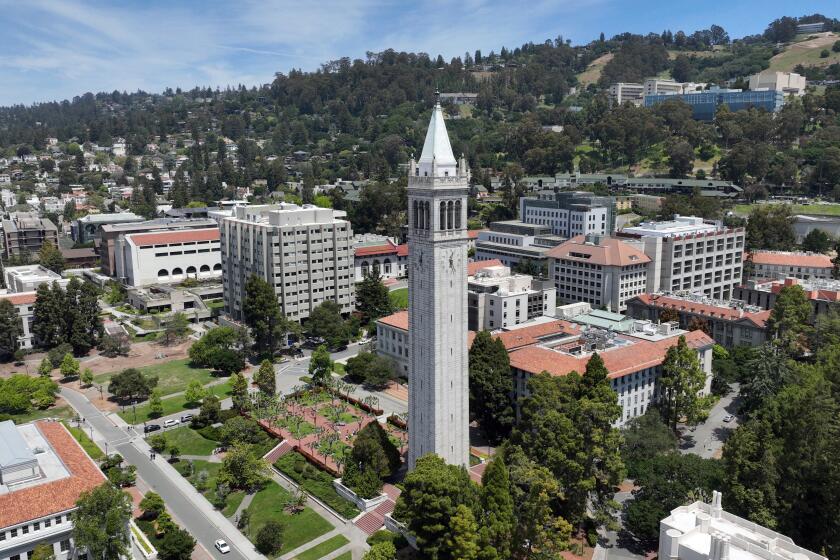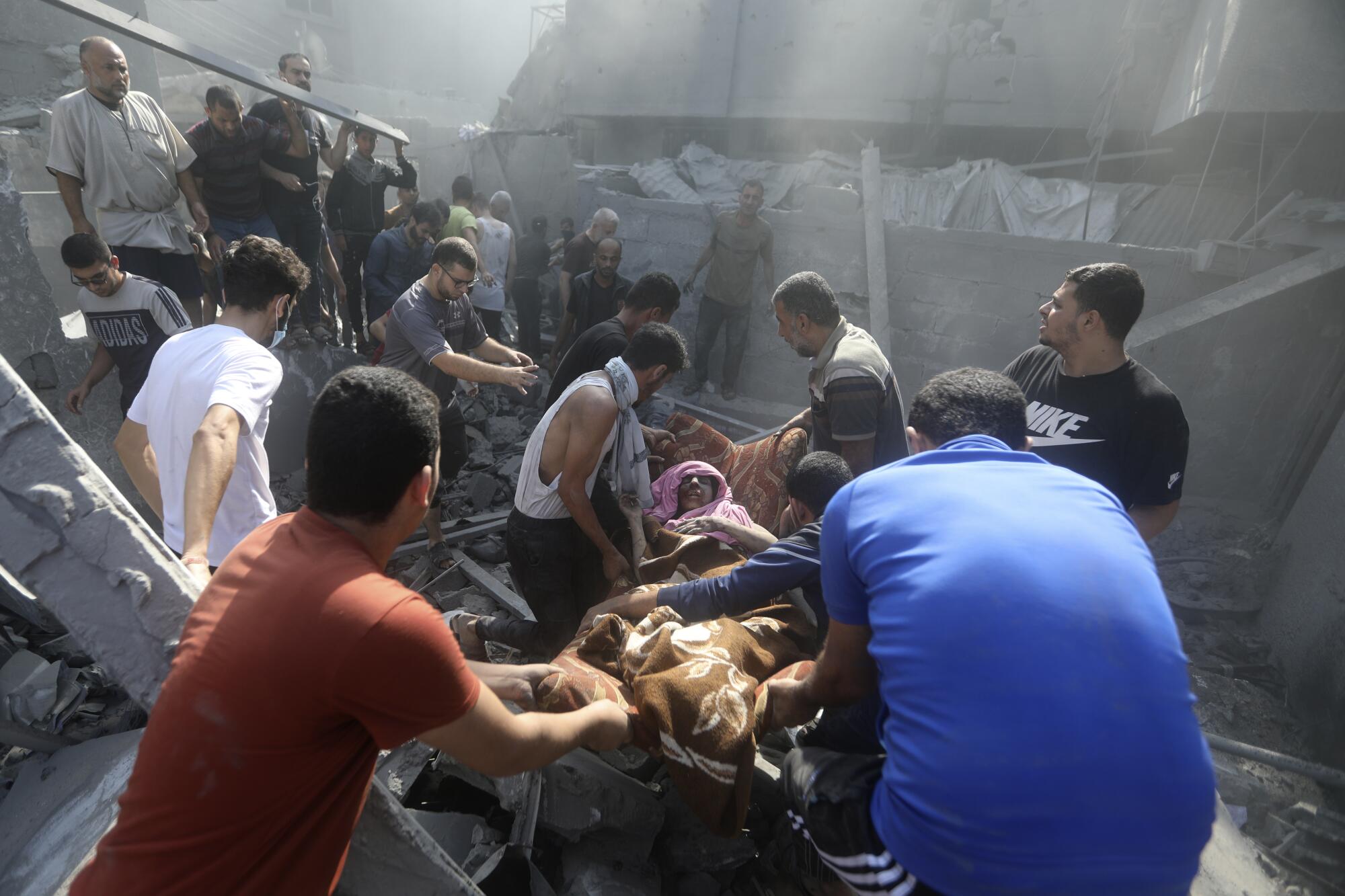
- Share via
TEL AVIV — Israeli Prime Minister Benjamin Netanyahu on Friday pushed back against growing U.S. pressure for a “humanitarian pause” in the nearly month-old war in order to protect civilians and allow more aid into the Gaza Strip, insisting there would be no temporary cease-fire until some 240 hostages held by Hamas were released.
U.S. Secretary of State Antony J. Blinken made his third trip to Israel since the war began, reiterating American support for Israel’s campaign to crush Hamas after its brutal Oct. 7 attack in southern Israel. He also echoed President Biden’s earlier call for a brief halt in the fighting to address a worsening humanitarian crisis.
Alarm has grown over spiraling Palestinian deaths and deepening misery for civilians after weeks of Israeli bombardment and a widening ground assault that risks even greater casualties. Overwhelmed hospitals say they are nearing collapse, with medicines and fuel running low under the Israeli siege. About 1.5 million people in Gaza, or 70% of the population, had fled their homes, the U.N. said Friday.
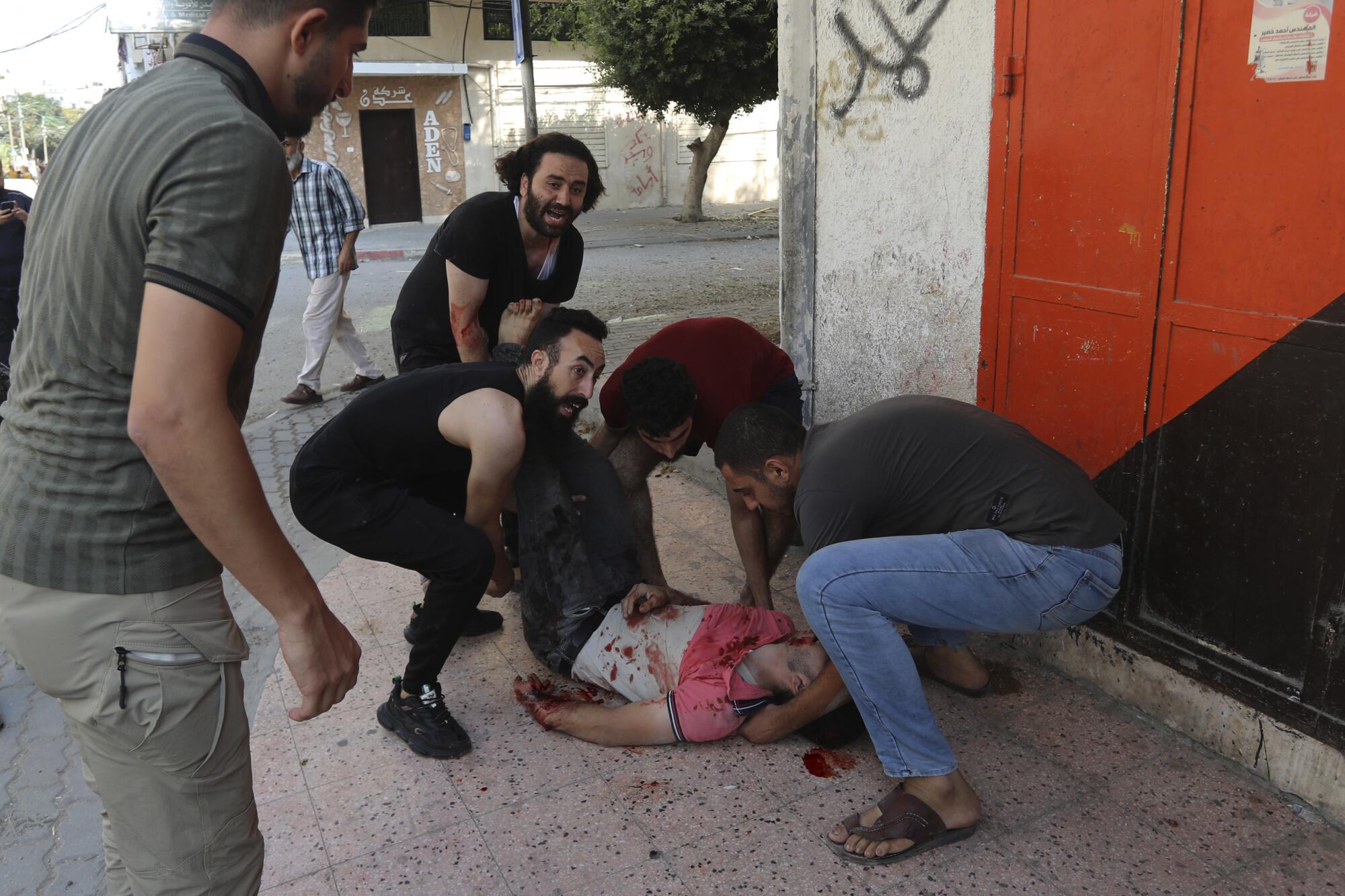
Palestinians are increasingly desperate for the most basic supplies.
The average Gaza resident is now surviving on two pieces of bread per day, much of it made from stockpiled U.N. flour, said Thomas White, Gaza director for the U.N. agency for Palestinian refugees. Demand for drinking water is also growing.
“People are beyond looking for bread,” he told U.N. diplomats in a video briefing from Gaza. “It’s looking for water.”
After talks with Netanyahu, Blinken said a temporary halt in the violence was needed to boost aid deliveries and help win the release of the hostages whom Hamas militants took during the rampage in which they massacred more than 1,000 civilians. But Netanyahu said he told Blinken that unless hostages are released, “we are going with full steam ahead.”
U.S. officials initially said they were not seeking a cease-fire, but short pauses in attacks in specific areas to allow aid deliveries or other humanitarian activity, after which Israeli military operations in Gaza would resume. Netanyahu has not publicly addressed the idea and has instead repeatedly ruled out a cease-fire.
On Friday, however, a senior U.S. administration official said policymakers believe a “fairly significant pause” in fighting will be needed to allow for hostage releases. The idea is modeled on a smaller-scale pause that allowed the freeing of two American hostages from Hamas captivity last month.
The official, speaking on condition of anonymity to discuss the matter, said that the recent hostage release was a “testing pilot” for how a broader deal might be struck, and that negotiations over a “larger package” of hostages were ongoing. The official emphasized that a significant pause in fighting would be required to ensure their safety to the Gaza-Israel boundary.
Israeli troops tightened their encirclement of Gaza City, the focus of their campaign to crush the enclave’s ruling Hamas militants, as airstrikes wreaked havoc around the city, the largest in the tiny Mediterranean territory. Al Jazeera TV reported that a strike late Friday hit a school in Gaza City where many were taking refuge, causing casualties.
While Palestinians are horrified by Israel’s war in Gaza, many are also angry with what they see as their own weak and useless official leadership.
Strikes hit near the entrances of three hospitals in northern Gaza just as staff were trying to evacuate wounded to the south, hospital directors said. Video showed the aftermath outside Gaza’s largest hospital, Shifa, where more than a dozen bloodied bodies of men, women and young children were strewn next to damaged cars and ambulances. One bleeding boy screamed as he huddled on top of a woman sprawled on the pavement.
At least 15 people were killed and 60 wounded outside Shifa Hospital, said Health Ministry spokesperson Ashraf Qidra. At least 50 others were killed or wounded in a strike outside the Indonesian Hospital, its director said, without providing more precise figures.
The strike outside Shifa came after Israel said Hamas has a command center at the facility — a claim that could not be independently verified and that Hamas and hospital officials deny.
The Israeli military said its aircraft Friday hit an ambulance that Hamas fighters were using to carry weapons. The claim could not be independently verified. It was not clear whether the strike was connected to the one by Shifa Hospital. The military said it took place “near a battle zone,” suggesting it was elsewhere by the ongoing ground battles.
Airstrikes flatten blocks of Gaza refugee camp, bringing rage, grief and a perilous new phase of war
Israel’s military says it killed a Hamas commander in devastating strikes in Jabaliya refugee camp in Gaza. Hospital chief describes ‘waterfall of casualties.’
Qidra said a convoy of ambulances left Shifa, carrying wounded to Rafah, when a first strike hit one of the vehicles on the edges of Gaza City. The convoy turned around, and another strike hit another ambulance in the group. He denied claims any of the ambulances were used by Hamas fighters.
Ever since the Oct. 7 assault, there have been concerns that the conflict could ignite fighting on other fronts, and Israel and the Iranian-backed militant group Hezbollah have repeatedly traded fire along the Lebanon border.
In his first public speech since the war began, Hezbollah leader Hassan Nasrallah said his group had “entered the battle.”
He suggested escalation was possible: “We will not be limited to this.” But he gave little sign that Hezbollah would fully engage in the fighting. So far, Hezbollah has taken calculated steps to show backing for Hamas without igniting an all-out war, which would be devastating for Lebanon and Israel.
As desperate Palestinians in Gaza try to find refuge from Israeli bombardment, many ask why Egypt and other Arab nations refuse to take them in.
Blinken said the U.S., which has deployed aircraft carriers and other forces in the eastern Mediterranean, was committed to ensuring that no “second or third front” opens.
Nasrallah dismissed U.S. warnings, saying: “Your fleets in the Mediterranean ... will not scare us.”
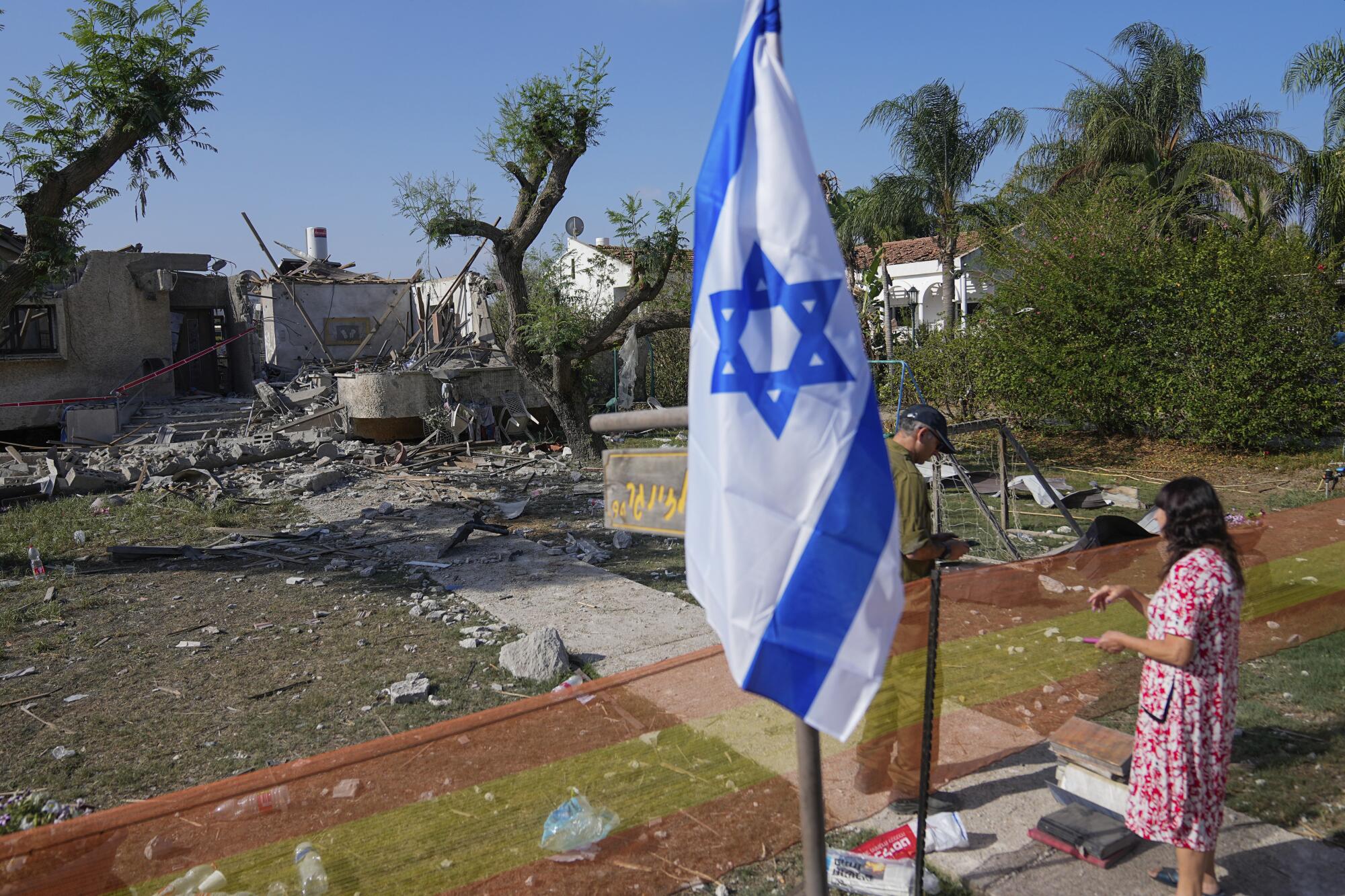
Exchanges since the start of the war have killed 10 Lebanese civilians and 66 fighters from Hezbollah and other militant groups and seven Israeli soldiers and a civilian in northern Israel.
Hezbollah is much stronger than Hamas, with an arsenal of some 150,000 rockets and missiles, some believed to be precision-guided weapons capable of striking deep inside Israel.
Israel has promised to unleash vast destruction in Lebanon if all-out war erupts, accusing Hezbollah of hiding its military installation in the midst of residential areas. The two enemies fought an inconclusive monthlong war in 2006. Renewed fighting also could risk drawing Iran, which backs both Hamas and Hezbollah, into the conflict.
More than 9,200 Palestinians have been killed in Gaza so far, mostly women and children, and more than 23,000 people have been wounded, the Gaza Health Ministry said, without providing a breakdown of civilians and fighters. The ministry had previously said 32,000 had been wounded.
Weeks after Hamas militants paraded her nearly naked body, young Israeli festival-goer Shani Louk is confirmed dead. Many families still await news of their loved ones.
More than 1,400 people have died on the Israeli side, mainly civilians killed during Hamas’ initial attack. Some 5,400 have been injured.
Twenty-four Israeli soldiers have been killed in Gaza since the start of the ground operation. Since the start of the war, seven Israeli soldiers and a civilian have been killed in different incidents along Israel’s border with Lebanon.
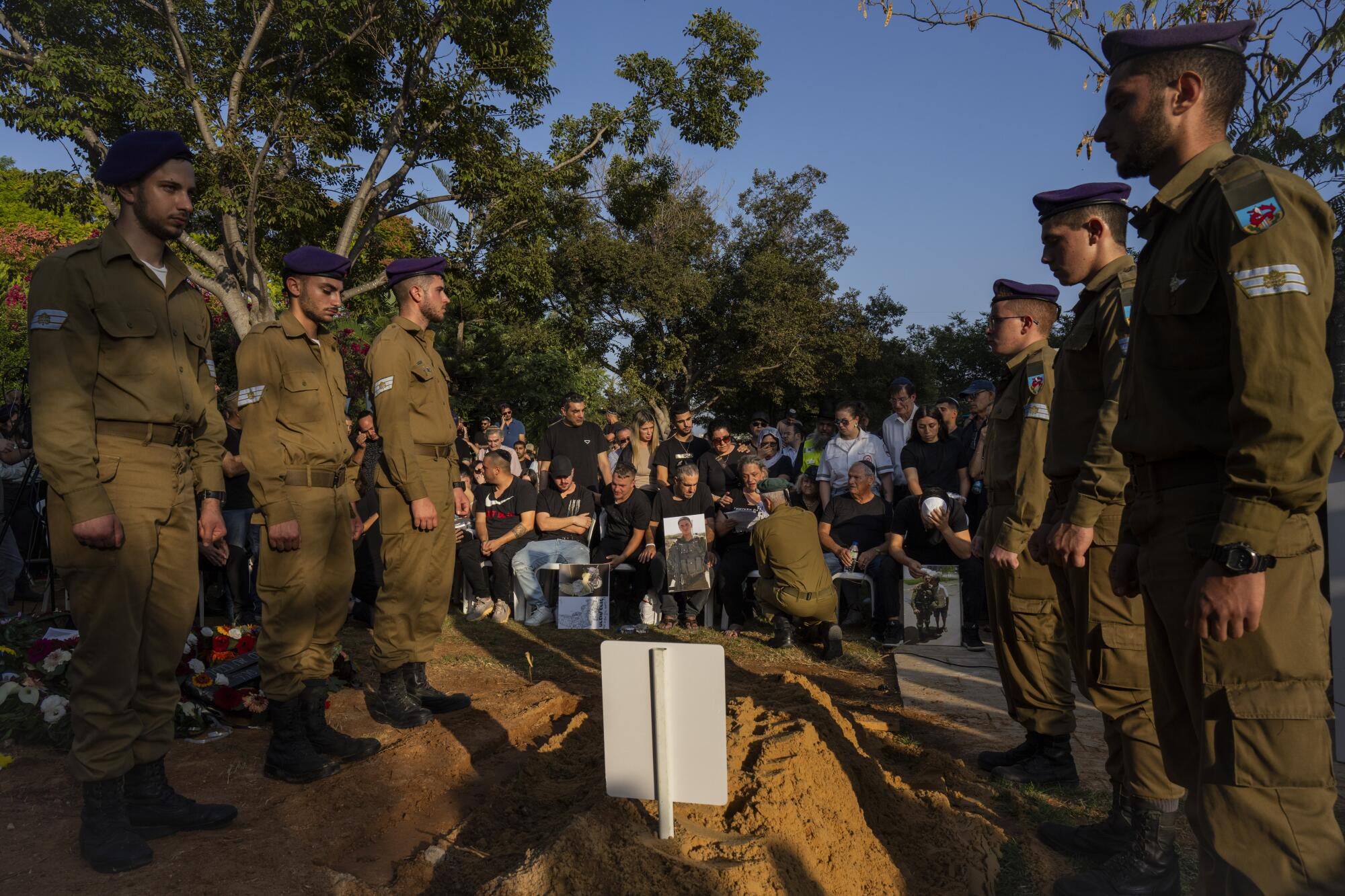
Rocket fire by Gaza militants into Israel has continued, disrupting life for millions of people and forcing an estimated 250,000 people to evacuate towns in northern and southern Israel. Most rockets are intercepted.
The toll is likely to rise dramatically: Israeli military officials said their forces have encircled densely built-up Gaza City and began Friday to launch targeted attacks within the city on militant cells.
Hundreds of thousands of Palestinians remain in the city and nearby parts of northern Gaza. Israel says Hamas has an extensive military infrastructure in the city, including a network of underground tunnels, bunkers and command centers. It says its strikes target Hamas and the militants endanger civilians by operating among them.
The Israeli military said its troops have killed numerous Hamas militants exiting tunnels. Footage released by the military showed soldiers and tanks advancing toward bombed-out buildings.
Around 800 people have left Gaza over the last two days — the first time people departed the besieged territory other than four hostages released by Hamas and another rescued by Israeli forces.
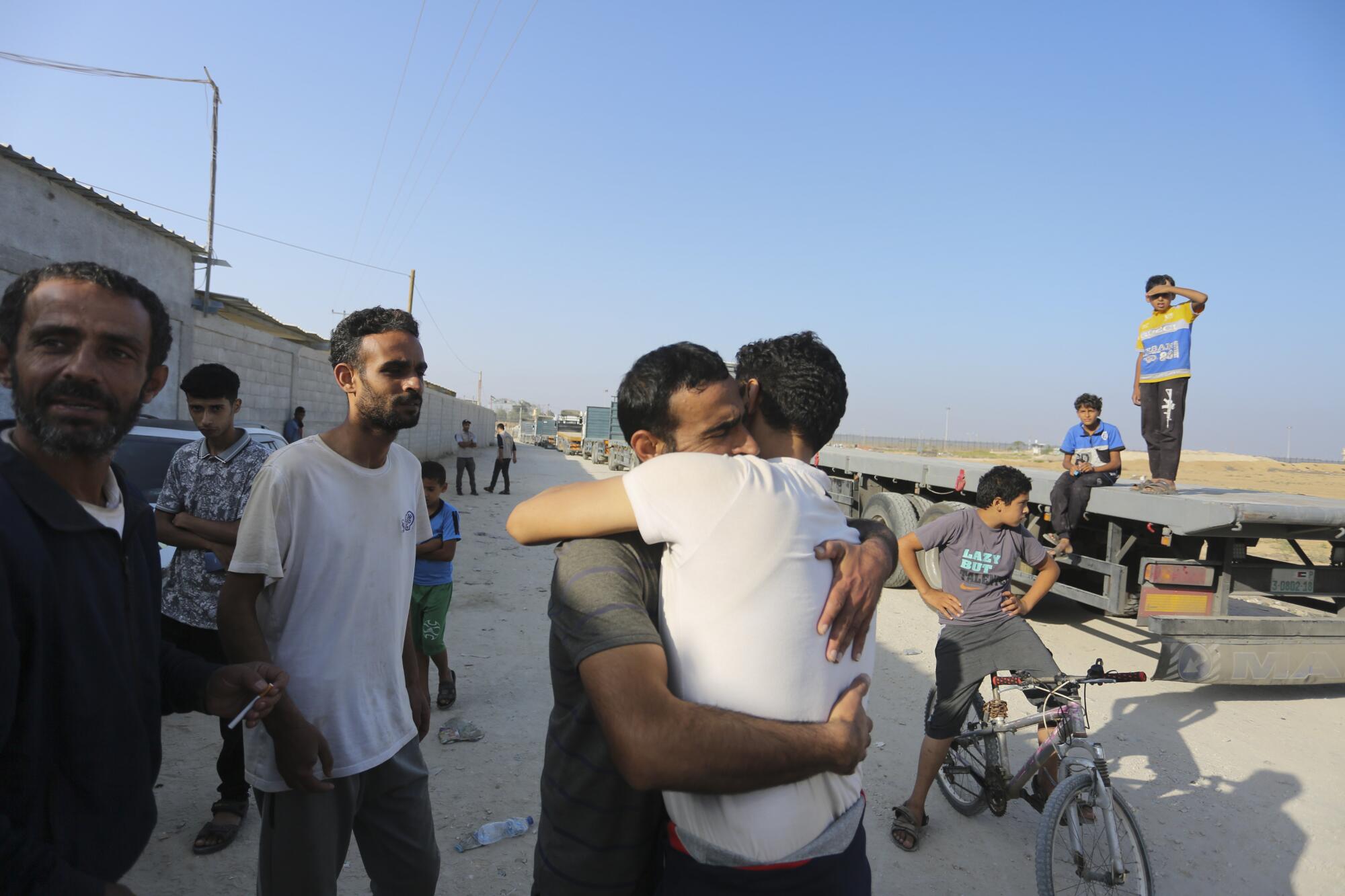
Hamas’ military wing said Friday its fighters battled Israeli troops in several areas, claiming they killed four soldiers near the city of Beit Lahiya and destroyed four tanks.
Neither side’s reports could be independently verified.
Israel has repeatedly told residents of Gaza’s north to evacuate to the south for greater safety. But many have been unable to leave or stay fearing continued airstrikes in the south — especially with Israeli forces on the main roads heading south.
Violence surges in the West Bank as Israel increases raids to root out militants. Palestinians say the military is using the war as an excuse to crack down.
The military on Thursday told residents to evacuate the Shati refugee camp on Gaza City’s edge. On Friday, shells hit a convoy of evacuees on the coastal road they were told to use, killing roughly a dozen people, doctors said. Footage from the road showed dead bodies of children encrusted with blood lying in the sand.
Farther south, workers pulled 17 bodies from the rubble of a building leveled by a strike in Khan Younis, witnesses said. AP images showed rescuers digging with bare hands to save someone completely buried, with one arm protruding from the wreckage. At a hospital, a crying man held up the dead body of a small girl whose lower limbs appeared to be missing.
In the occupied West Bank overnight, Israeli forces killed seven Palestinians in different places and arrested many more, according to the Israeli military and Palestinian health officials.
A Wall Street Journal op-ed by professor Steven Davidoff Solomon recommended against hiring students who ‘support discriminatory bylaws or other acts and resolutions blaming Jews and Israelis for the Hamas massacre.’
Blinken first held talks with Netanyahu before holding wider discussions with the prime minister’s war Cabinet and meeting with President Isaac Herzog. He stopped later Friday in Amman, Jordan.
As American officials have before, Blinken pledged unwavering support for Israel, saying it “has not only the right but the obligation to defend itself.”
Biden’s suggestion for a humanitarian “pause” in the fighting aims to let in aid for Palestinians and let out more Palestinians who hold foreign passports and wounded.
More than 386 Palestinian dual nationals and wounded exited Gaza into Egypt on Friday, according to Wael Abou Omar, the Hamas spokesman for the Rafah border crossing. That brings the total who have gotten out since Wednesday to 1,115.
Israel has allowed more than 300 trucks carrying food and medicine through the crossing, but aid workers say it’s not nearly enough. Israeli authorities have refused to allow fuel in, saying Hamas is hoarding fuel for military use and would steal new supplies.
Israel on Friday released hundreds of Palestinian workers who said they had been held in an Israeli-run jail since the war began. They were dropped off near Gaza and entered through the Kerem Shalom border crossing.
Breaking News
Get breaking news, investigations, analysis and more signature journalism from the Los Angeles Times in your inbox.
You may occasionally receive promotional content from the Los Angeles Times.
Hundreds of thousands of Palestinians remain in the path of fighting in northern Gaza, despite Israel’s repeated calls for them to evacuate. Many have crowded into United Nations facilities, hoping for safety.
Still, four U.N. schools-turned-shelters in northern Gaza and Bureij were hit in recent days, killing 24 people, according to Philippe Lazzarini, general-secretary of the U.N. agency for Palestinian refugees, known as UNRWA.
More to Read
Sign up for Essential California
The most important California stories and recommendations in your inbox every morning.
You may occasionally receive promotional content from the Los Angeles Times.
